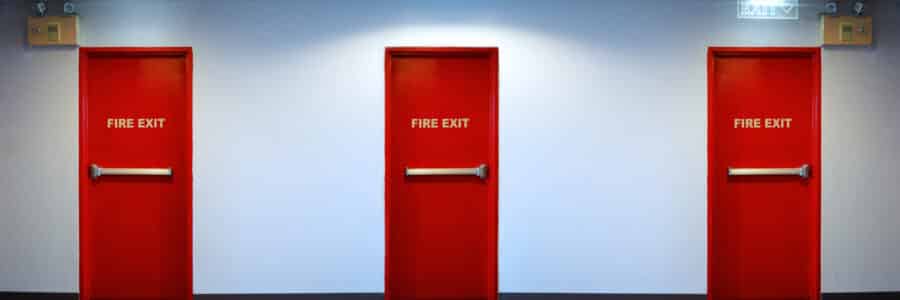A Guide To 1 Hour Fire Doors
Fire safety is a priority in any building or development where people work or reside – and fire doors are an integral part of any building’s passive fire protection. These fire-rated doors help save lives and property – there are different types of fire doors available, offering different levels of protection. Here are some facts to consider with regards to FD60 doors, often referred to as 1 hour fire doors:
How 1 Hour Fire Doors Work
The main function of a fire door is to contain all elements of a fire outbreak inside the area or room in which it has originated – fire doors stop the spread of any flame, heat, or smoke to adjoining areas. Fire doors prevent the spread of a fire outbreak for a specific amount of time – FD60 doors will contain the fire elements for a minimum of sixty minutes. The weakest point of a fire door is the exposed gap between the door and the frame, making the intumescent seals one of the most important components of any fire door. The materials used to make intumescent seals are poor conductors of heat, thereby swelling immediately they are exposed to excess temperatures – in expanding quickly they seal the gap between the door frame and the fire door itself, therefore preventing the spread of flames and potentially toxic smoke to any other area. Often these seals are also fitted with a brush or ‘flipper’ which provides extra protection from the spread of smoke.
Compartmentalisation
Fire doors contain and ‘compartmentalise’ any fire outbreak, thus potentially saving lives and minimising damage to the building itself. A ‘fire compartment’ can be a single room, or a collection of rooms or space – 1 hour fire doors will be able to contain the fire outbreak within that initial outbreak area for a minimum of 60 minutes. Fire doors protect the escape routes out of the building, creating time and opportunity for any occupants to evacuate the building and for the emergency services to attend and deal with the fire.
Manufacture And testing
Fire doors are constructed with a combination of different materials. They are thicker than standard doors and have a solid core of wood or steel – all fire doors are designed, constructed, and tested to specific levels to allow official certification from an approved fire testing centre. Fire doors are subjected to rigorous testing before they can be installed – using an independent third-party test centre, 1 hour fire doors are subjected to a variety of conditions and all elements of the doorset must prove fire-resistant, including not just the door core itself, but also any door furniture (handles, hinges etc) and any glazing panels where applicable. Once tested, all 1 hour fire doors will display compliance tags and identification which carry further information about the actual fire rating of the doorset and confirm the one hour fire-resistance level it provides. A compliance tag also indicates that the purpose made fire door has been tested and installed to the correct standards. The compliance tag should contain information on, not only the one hour fire resistance level, but also the date of manufacture, the item serial number along with the name of the independent certifier and the owner.
The Legal Requirement
All business, commercial properties and public buildings must have relevant fire doors installed as a legal requirement. Any residential apartments, flats and houses of multiple occupation are also subject to these mandatory requirements specified in the new Building Safety Act 2023. It is in many of these environments where you may need 1 hour fire doors installed.
Where 1 Hour Fire Doors Are Needed
Fire doors are manufactured in different levels of fire resistance – an FD60 door will typically be required in larger areas within buildings such as an office that houses over 300 people, or environments that may take longer to evacuate in the event of a fire outbreak occurrence. As stated earlier, all common areas of public buildings and developments such as houses of multiple occupation (HMO’s) and residential flats would benefit from 1 hour fire doors being installed, as opposed to the FD30 doors that only provide half the time element of protection.
Installation
Regardless of the quality of the fire door, if it is installed incorrectly, then it will not perform its safety functions in the event of a fire outbreak. One hour fire doors will resist all fire elements for up to sixty minutes – but this is dependent upon being properly installed with the other relevant fire door features such as intumescent seals, fire-rated hardware, and door closers. Regular fire door inspections MUST be performed to ensure ongoing fire protection.
It is always recommended that you should speak to an established and respected bespoke door manufacturer for advice and guidance on fire doors.
Enfield Doors
If you would like more information about 1 hour fire doors, please contact us. Our team will be happy to help you.









